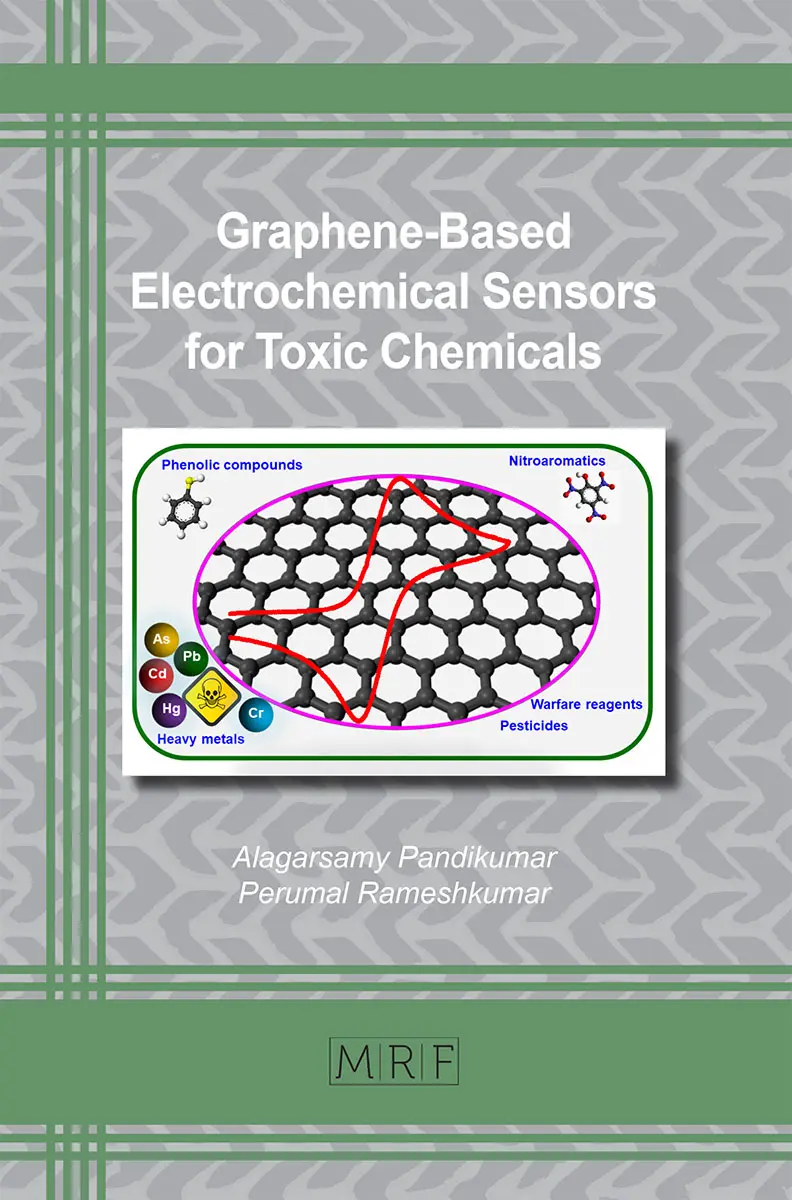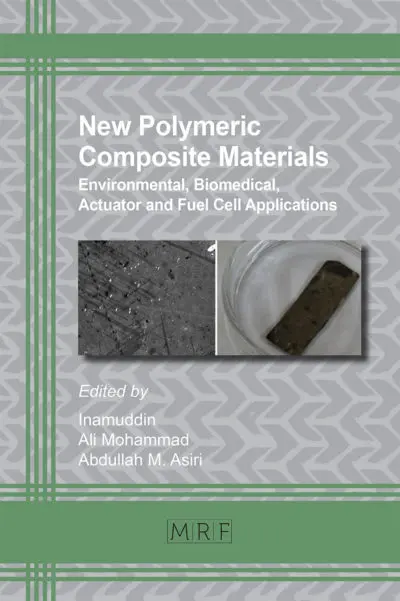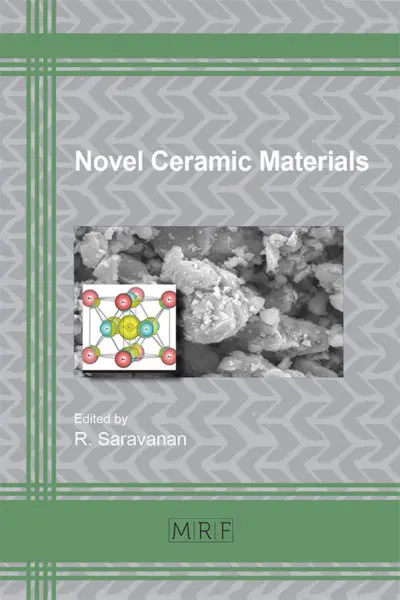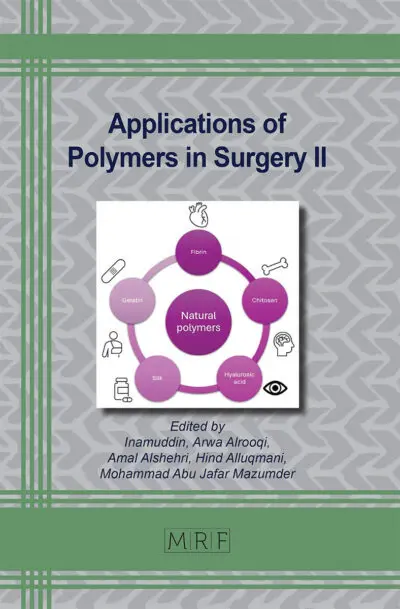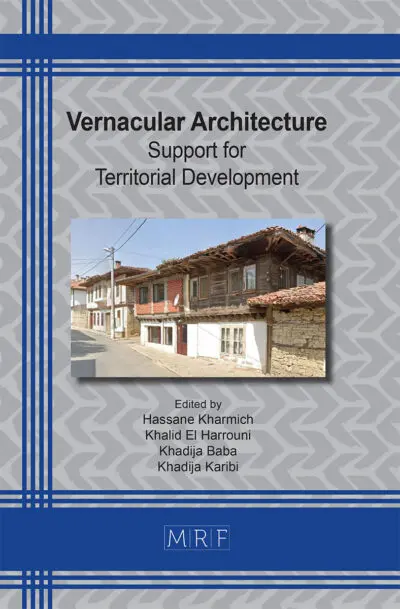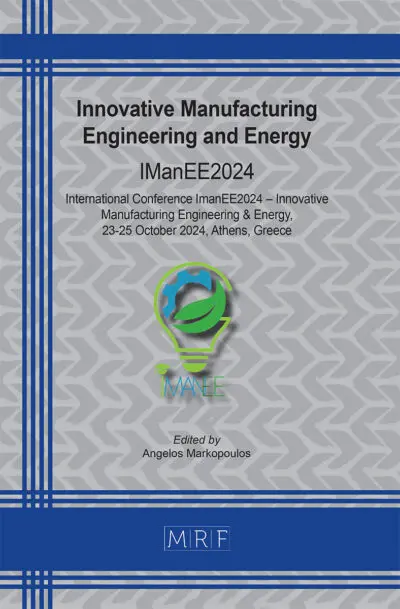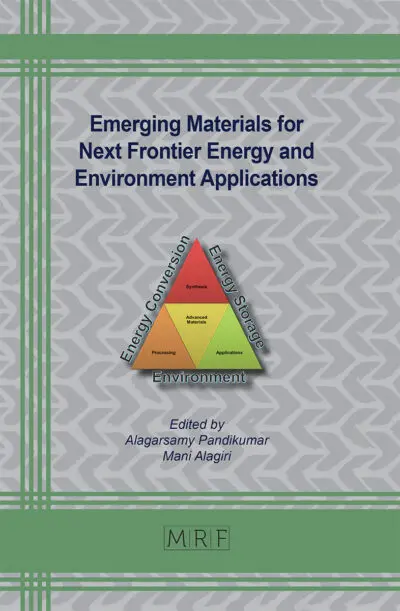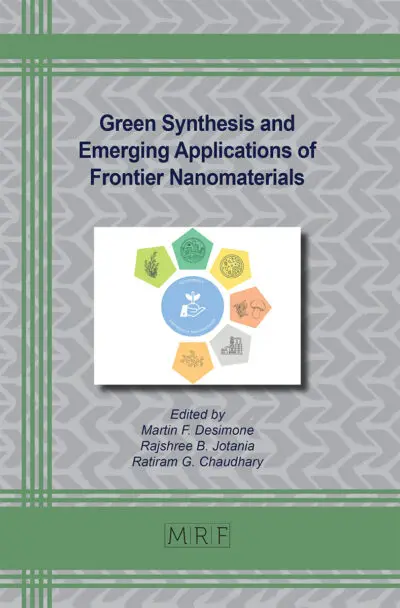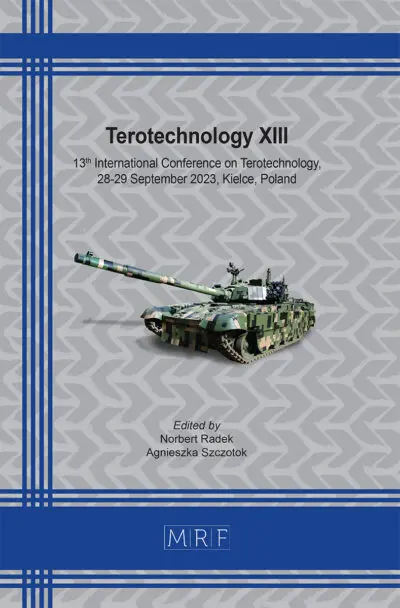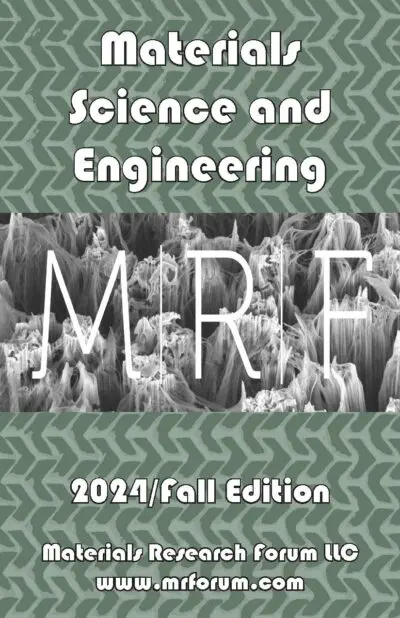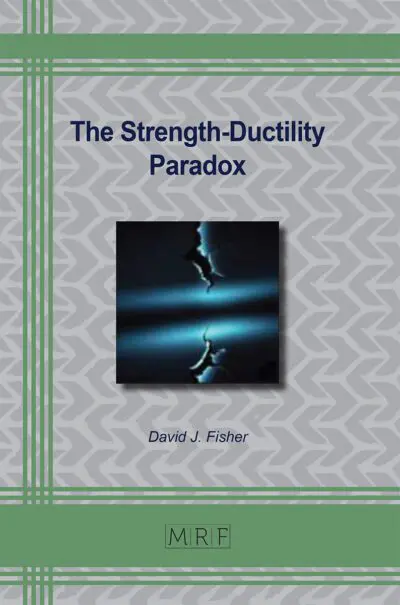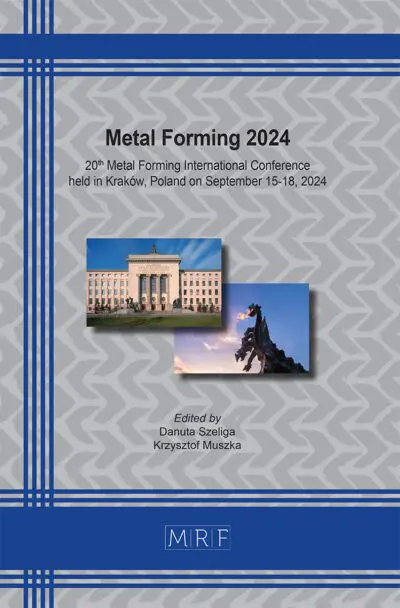Graphene-Metal Chalcogenide based Electrochemical Sensors for Toxic Chemicals
A. Arivarasan
The developments in industrial and technological sectors result in severe environmental issues, such as environmental contamination and pollution. Among the various types of contaminations, toxic gases, heavy metal ions, pesticides and fertilizers, etc., play a major role in environmental issues. As an advancement of the sensors used to detect such toxic chemicals, electrochemical sensor attracts much attention in recent days. The development of graphene based nanocomposites for electrochemical sensors, paving a new path for the sensitive and efficient detection of such chemicals. Graphene/metal chalcogenide based nanocomposites have gained worldwide attention in recent decades and are being researched for use in different applications due to their unique physical and chemical properties. This chapter aims a comprehensive presentation of various toxic chemicals, their environmental effects and their conventional sensing mechanism. The role of graphene, metal chalcogenides and their nanocomposites on the sensing mechanism in electrochemical sensors were reviewed.
Keywords
Electrochemical Sensors, Graphene/Metal Chalcogenides, Nanocomposites, Toxic Chemicals
Published online 8/30/2020, 35 pages
Citation: A. Arivarasan, Graphene-Metal Chalcogenide based Electrochemical Sensors for Toxic Chemicals, Materials Research Foundations, Vol. 82, pp 151-185, 2020
DOI: https://doi.org/10.21741/9781644900956-6
Part of the book on Graphene-Based Electrochemical Sensors for Toxic Chemicals
References
[1] L. P. Martin, A.-Q. Pham, R. S. Glass, Electrochemical hydrogen sensor for safety monitoring, Solid State Ionics, 175 (2004) 527-530. https://doi.org/10.1016/j.ssi.2004.04.042
[2] M. Suresh, N. J. Vasa, V. Agarwal, J. Chandapillai, UV photo-ionization based asymmetric field differential ion mobility sensor for trace gas detection, Sens. Actuator B-Chem., 195 (2014) 44-51. https://doi.org/10.1016/j.snb.2014.01.008
[3] C. Di Natale, V. Ferrari, A. Ponzoni, G. Sberveglieri, and M. Ferrari, Sensors and Microsystems: Proceedings of the 17th National Conference, Brescia, Italy, 5-7 February 2013, 268 (2013) Springer Science & Business Media. https://doi.org/10.1007/978-3-319-00684-0
[4] C. Li and G. Shi, Carbon nanotube-based fluorescence sensors J. Photochem. Photobiol., C: Photochem. Rev., 19 (2014) 20-34. https://doi.org/10.1016/j.jphotochemrev.2013.10.005
[5] Q. Zhu and R. C. Aller, Planar fluorescence sensors for two-dimensional measurements of H2S distributions and dynamics in sedimentary deposits, Mar. Chem., 157 (2013) 49-58. https://doi.org/10.1016/j.marchem.2013.08.001
[6] R. Jackson, R. P. Oda, R. K. Bhandari, S. B. Mahon, M. Brenner, G. A. Rockwood, and B.A. Logue, Development of a Fluorescence-Based Sensor for Rapid Diagnosis of Cyanide Exposure, Anal. Chem., 86 (2014) 1845-1852. https://doi.org/10.1021/ac403846s
[7] K. Zakrzewska, Mixed oxides as gas sensors, Thin solid films, 391 (2001) 229-238. https://doi.org/10.1016/S0040-6090(01)00987-7
[8] Z. Darmastuti, C. Bur, P. Möller, R. Rahlin, N. Lindqvist, M. Andersson, A. Schütze, A. Lloyd Spetz, SiC–FET based SO2 sensor for power plant emission applications Sens. Actuator B-Chem., 194 (2014) 511-520. https://doi.org/10.1016/j.snb.2013.11.089
[9] N. S. Lawrence, L. Jiang, T. G. Jones, R. G. Compton, A Thin-Layer Amperometric Sensor for Hydrogen Sulfide: The Use of Microelectrodes To Achieve a Membrane-Independent Response for Clark-Type Sensors, Anal. Chem., 75 (2003) 2499-2503. https://doi.org/10.1021/ac0206465
[10] E. Jones, Techniques and mechanism in gas sensing., (1987) 17.
[11] J. W. Fergus, Perovskite oxides for semiconductor-based gas sensors, Sens. Actuator B-Chem., 123 (2007) 1169-1179. https://doi.org/10.1016/j.snb.2006.10.051
[12] X. Liu, S. Cheng, H. Liu, S. Hu, D. Zhang, and H. Ning, A Survey on Gas Sensing Technology, Sensors, 12 (2012) 9635-9665. https://doi.org/10.3390/s120709635
[13] A. W. E. Hodgson, P. Jacquinot, L. R. Jordan, and P. C. Hauser, Amperometric gas sensors with detection limits in the low ppb range, Anal Chim Acta, 393 (1999) 43-48. https://doi.org/10.1016/S0003-2670(99)00189-0
[14] E. Bakker and M. Telting-Diaz, Electrochemical Sensors Anal. Chem., 74 (2002) 2781-2800. https://doi.org/10.1021/ac0202278
[15] G. Alberti, F. Cherubini, R. Palombari, Amperometric solid-state sensor for NO and NO2 based on protonic conduction, Sens. Actuator B-Chem., 37 (1996) 131-134. https://doi.org/10.1016/S0925-4005(97)80127-X
[16] K.J. Huang, L. Wang, Y.J. Liu, T. Gan, Y.M. Liu, L.L. Wang, Y. Fan, Synthesis and electrochemical performances of layered tungsten sulfide-graphene nanocomposite as a sensing platform for catechol, resorcinol and hydroquinone, Electrochim. Acta, 107 (2013) 379-387. https://doi.org/10.1016/j.electacta.2013.06.060
[17] R.V. Burg, T. Stout, Hydrazine, J. Appl. Toxicol., 11 (1991) 447-450. https://doi.org/10.1002/jat.2550110612
[18] D.P. Elder, D. Snodin, A. Teasdale, Control and analysis of hydrazine, hydrazides and hydrazones-Genotoxic impurities in active pharmaceutical ingredients (APIs) and drug products J. Pharm. Biomed. Anal., 54 (2011) 900-910. https://doi.org/10.1016/j.jpba.2010.11.007
[19] U. Ragnarsson, Synthetic methodology for alkyl substituted hydrazines, Chem. Soci. Review, 30 (2001) 205-213. https://doi.org/10.1039/b010091a
[20] U.S. Environmental Protection Agency (EPA), Integrated Risk Information System (IRIS) on hydrazine, Hydrazine sulfate: National centre for environmental assessment, office of research and development: Washington, DOC, 1999. and development: Washington, DOC, 1999.
[21] A. Agarwal, P.G. Tratnyek, Reduction of Nitro Aromatic Compounds by Zero-Valent Iron Metal, Environ. Sci. Technol., 30 (1996) 153-160. https://doi.org/10.1021/es950211h
[22] Ambient water quality criteria for nitrobenzene (EP1.29/3:N63/3) in: U.S.E.P, Agency (Ed.), Washington, DC: (1980).
[23] Y. Mu, R.A. Rozendal and K. Rabaey, J. Keller, Nitrobenzene Removal in Bioelectrochemical Systems, J. Environ. Sci., 43 (2009) 8690-8695. https://doi.org/10.1021/es9020266
[24] C. Schummer, C. Groff, J.A. Chami, F. Jaber and M. Millat, Analysis of phenols and nitrophenols in rainwater collected simultaneously on an urban and rural site in east of France, Sci. Total Environ., 407 (2009) 5637-5643. https://doi.org/10.1016/j.scitotenv.2009.06.051
[25] X.M. Xu, Z. Liu, X. Zhang, S. Duan, S. Xu, C.L. Zhou, β-Cyclodextrin functionalized mesoporous silica for electrochemical selective sensor: Simultaneous determination of nitrophenol isomers, Electrochim. Acta, 58 (2011) 142- 149. https://doi.org/10.1016/j.electacta.2011.09.015
[26] S. Wu, F. Huang, X. Lan, X. Wang, J. Wang and C. Meng, Electrochemically reduced graphene oxide and Nafion nanocomposite for ultralow potential detection of organophosphate pesticide, Sens. Actuators, B, 2013, 177 (2013) 724-729. https://doi.org/10.1016/j.snb.2012.11.069
[27] A.H.A. Hassan, S.L. Moura, F.H.M. Ali, W.A. Moselhy, M.I. Pividori, Electrochemical sensing of methyl parathion on magnetic molecularly imprinted polymer, Biosens. Bielectronics, 118 (2018) 181-187. https://doi.org/10.1016/j.bios.2018.06.052
[28] J.H. Duffus, Heavy metals: A meaningless term? Pure Appl. Chem. 74 (2002) 793-807. https://doi.org/10.1351/pac200274050793
[29] G. Aragay, F. Pino, A. Merkoci, Nanomaterials for sensing and ̧ destroying pesticides. Chem. Rev. 112 (2012) 5317-5338. https://doi.org/10.1021/cr300020c
[30] H.J. Huang, Y.K. Choi, Chemical sensors based on nanostructured materials. Sens. Actuators, B 122 (2017) 659-671. https://doi.org/10.1016/j.snb.2006.06.022
[31] M. Li, H. Gou, I. Al-Ogaidi, N. Wu, Nanostructured Sensors for Detection of Heavy Metals: A Review, ACS Sustainable Chem. Eng., 1 (2013) 713-723. https://doi.org/10.1021/sc400019a
[32] D.W. Kimmel, G. LeBlanc, M.E. Meschievitz, D.E. Cliffel, Electrochemical sensors and biosensors. Anal. Chem. 84 (2012) 685- 707. https://doi.org/10.1021/ac202878q
[33] L. Rassaei, F. Marken, M. Sillanpaä, M. Amiri, C.M. Cirtiu, M. Sillanpaä, Nanoparticles in electrochemical sensors for environmental monitoring. Trends Anal. Chem. 30 (2011) 1704-1714. https://doi.org/10.1016/j.trac.2011.05.009
[34] T. Kuila, S. Bose, P. Khanra, A.K. Mishra, N.H. Kim, J.H. Lee, Recent advances in graphene-based biosensors. Biosens. Bioelectron. 26 (2011) 4637-4648. https://doi.org/10.1016/j.bios.2011.05.039
[35] M.A. Bauer, M.J. Utell, P.E. Morrow, D.M. Speers, F.R. Gibb, Inhalation of 0.30 ppm nitrogen dioxide potentiates exercise-induced bronchospasm in asthmatics. Am. Rev. Respir. Dis., 134 (1986)1203–1208.
[36] Ehrlich, R. Effect of nitrogen dioxide on resistance to respiratory infection. Bacteriol. Rev., 30 (1966) 604–614. https://doi.org/10.1128/MMBR.30.3.604-614.1966
[37] S. Genc, Z. Zadeoglulari, S.H. Fuss, K. Genc, The adverse effects of air pollution on the nervous system. J. Toxicol. 2012, 2012. https://doi.org/10.1155/2012/782462
[38] S.W. Lee, W. Lee, Y. Hong, G. Lee, D.S. Yoon, Recent advances in carbon material-based NO2 gas sensors. Sens. Actuators B Chem., 255 (2018) 1788–1804. https://doi.org/10.1016/j.snb.2017.08.203
[39] Y.Y. Guo, Y.R. Li, T.Y. Zhu, M. Ye, Investigation of SO2 and NO adsorption species on activated carbon and the mechanism of NO promotion effect on SO2, Fuel 143 (2015) 536–542. https://doi.org/10.1016/j.fuel.2014.11.084
[40] C. Chatterjee, A. Sen, Sensitive colorimetric sensors for visual detection of carbon dioxide and sulfur dioxide, J. Mater. Chem. A 3 (2015) 5642–5647. https://doi.org/10.1039/C4TA06321J
[41] R.R. Khan, M.J.A. Siddiqui, Review on effects of Particulates; Sulfur Dioxide and Nitrogen Dioxide on Human Health. Int. Res. J. Environment Sci. 3 (2014) 70–73.
[42] J. Nisar, Z. Topalian, A.D. Sarkar, L. Osterlund, R. Ahuja, TiO2-based gas sensor: A possible application to SO2. ACS Appl. Mater. Interfaces 2013, 5 (2013) 8516–8522. https://doi.org/10.1021/am4018835
[43] C. Chou, Hydrogen Sulfide: Human Health Aspects: Concise International Chemical Assessment Document 53; World Health Organization: Geneva, Switzerland, 2003.
[44] A.D. Wiheeb, I.K. Shamsudin, M.A. Ahmad, M.N. Murat, J. Kim, M.R. Othman, Present Technologies for Hydrogen Sulfide Removal from Gaseous Mixtures. Rev. Chem. Eng. 29 (2013) 449–470. https://doi.org/10.1515/revce-2013-0017
[45] L. Xiong and R. G. Compton, Amperometric Gas detection: A Review, Int. J. Electrochem. Sci., 9 (2014) 7152-7181.
[46] F. Opekar and K. Štulík, Encyclopedia of Analytical Chemistry., (2001).
[47] D. S. Silvester, Recent advances in the use of ionic liquids for electrochemical sensing, Analyst, 136 (2011) 4871-4882. https://doi.org/10.1039/c1an15699c
[48] M. Ahmad Khan, F. Qazi, Z. Hussain, M.U. Idrees, S. Shahid, S. Saeeda, Review Recent Trends in Electrochemical Detection of NH3, H2S and NOx Gases, Int. J. Electrochem. Sci., 12 (2017) 1711 – 1733. https://doi.org/10.20964/2017.03.76
[49] C. Welch, O. Nekrassova, X. Dai, M. Hyde, R. G. Compton, Fabrication, Characterisation and Voltammetric Studies of Gold Amalgam Nanoparticle Modified Electrodes Chem. Phys. Chem. 5 (2004) 1405–1410. https://doi.org/10.1002/cphc.200400263
[50] J. Cassidy, J. Ghoroghchian, F. Sarfarazi, J.J. Smith,. Pons, Simulation of edge effects in electroanalytical experiments by orthogonal collocation—VI. Cyclic voltammetry at ultramicroelectrode ensembles, Electrochim. Acta, 31 (1986) 629-636. https://doi.org/10.1016/0013-4686(86)87029-3
[51] L. Shen, G.R. Zhang, W. Li, M. Biesalski, B.J.M. Etzold, Modifier-Free Microfluidic Electrochemical Sensor for Heavy-Metal Detection, ACS Omega, 2 (2017)593-4603. https://doi.org/10.1021/acsomega.7b00611
[52] R. Ramachandran T-W Chen, S-M Chen, T. Baskar, R. Kannan, P. Elumalai, P. Raja, T. Jeyapragasam, K. Dinakaran, G. Gnanakumar, Review of Advance Developments on Electrochemical Sensors for Detection of Toxic and Bioactive Molecules, Inorganic Chemistry Frontiers, 2019. https://doi.org/10.1039/C9QI00602H
[53] S. S. Varghese, S. H. Varghese, S. Swaminathan, K. K. Singh, and V. Mittal, Two-Dimensional Materials for Sensing: Graphene and BeyondElectronics 4 (2015) 651. https://doi.org/10.3390/electronics4030651
[54] D.V. Kosynkin, et al., Longitudinal unzipping of carbon nanotubes to form graphene nanoribbons, Nature 458 (7240) (2009) 872–876. https://doi.org/10.1038/nature07872
[55] N. Yang, et al., Two-dimensional graphene bridges enhanced photoinduced charge transport in dye-sensitized solar cells, ACS Nano 4 (2) (2010) 887–894. https://doi.org/10.1021/nn901660v
[56] R. Heyrovska, Atomic structures of graphene, benzene and methane with bond lengths as sums of the single, double and resonance bond radii of carbon, arXiv (2008). Preprint arXiv:0804.4086.
[57] Wikipedia, Available from: Wikipedia.org.
[58] B.C. Brodie, On the atomic weight of graphite, Philos. Trans. R. Soc. Lond. 149 (1859) 249–259. https://doi.org/10.1098/rstl.1859.0013
[59] S.R. Kumar, et al., Graphene oxide: strategies for synthesis, reduction and frontier applications, RSC Adv. 6 (2016) 64993–65011. https://doi.org/10.1039/C6RA07626B
[60] D.D.L. Chung, Exfoliation of graphite, J. Mater. Sci. 22 (12) (1987) 4190–4198. https://doi.org/10.1007/BF01132008
[61] W.H. Martin, J.E. Brocklehurst, The thermal expansion behaviour of pyrolytic graphitebromine residue compounds, Carbon 1 (2) (1964) 133–134. https://doi.org/10.1016/0008-6223(64)90067-3
[62] S.H. Anderson, D.D.L. Chung, Exfoliation of single crystal graphite and graphite fibers intercalated with halogens, Synth. Met. 8 (3–4) (1983) 343–349. https://doi.org/10.1016/0379-6779(83)90118-2
[63] D.D.L. Chung, L.W. Wong, Electromechanical behavior of graphite intercalated with bromine, Carbon 24 (5) (1986) 639–647. https://doi.org/10.1016/0008-6223(86)90154-5
[64] M.S.A. Bhuyan, et al., Synthesis of graphene, Int. Nano Lett. 6 (2) (2016) 65–83. https://doi.org/10.1007/s40089-015-0176-1
[65] Graphenea, Available from: www.graphenea.com.
[66] S. Pei, H.-M. Cheng, The reduction of graphene oxide, Carbon 50 (9) (2012) 3210–3228. https://doi.org/10.1016/j.carbon.2011.11.010
[67] Y. Zhu, et al., Microwave assisted exfoliation and reduction of graphite oxide for ultracapacitors, Carbon 48 (7) (2010) 2118–2122. https://doi.org/10.1016/j.carbon.2010.02.001
[68] D. Aldakov, A. Lefranc¸ois, P. Reiss, Ternary and quaternary metal chalcogenide nanocrystals: synthesis, properties and applications, J. Mater. Chem. C 1 (2013) 3756-3776. https://doi.org/10.1039/c3tc30273c
[69] J. Theerthagiri, K. Karuppasamy, G. Durai, A.H.S. Rana, P. Arunachalam, K. Sangeetha, P. Kuppusami, H-S. Kim, Recent Advances in Metal Chalcogenides (MX; X = S, Se) Nanostructures for Electrochemical Supercapacitor Applications: A Brief Review, Nanomaterials, 2018, 8 (2018) 256. https://doi.org/10.3390/nano8040256
[70] J. Zhang, et al., Noble metal-free reduced graphene oxide-ZnxCd1–xS nanocomposite with enhanced solar photocatalytic H2-production performance, Nano Lett. 12 (9) (2012) 4584–4589. https://doi.org/10.1021/nl301831h
[71] Y. Zhang, et al., Biomolecule-assisted, environmentally friendly, one-pot synthesis of CuS/ reduced graphene oxide nanocomposites with enhanced photocatalytic performance, Langmuir 28 (35) (2012) 12893–12900. https://doi.org/10.1021/la303049w
[72] M. Nouri, et al., High solar-light photocatalytic activity of using Cu3Se2/rGO nanocomposites synthesized by a green co-precipitation method, Solid State Sci. 73 (2017) 7–12. https://doi.org/10.1016/j.solidstatesciences.2017.09.001
[73] A. Tayyebi, et al., Supercritical synthesis and characterization of graphene–PbS quantum dots composite with enhanced photovoltaic properties, Ind. Eng. Chem. Res. 54 (30) (2015) 7382–7392. https://doi.org/10.1021/acs.iecr.5b00008
[74] B. Zhao, B. Zhao, Three-dimensional interconnected spherical graphene framework/SnS nanocomposite for anode material with superior lithium storage performance: complete reversibility of Li2S, ACS Appl. Mater. Interfaces 9 (2) (2017) 1407–1415. https://doi.org/10.1021/acsami.6b10708
[75] D.P. Kumar, et al., Ultrathin MoS2 layers anchored exfoliated reduced graphene oxide nanosheet hybrid as a highly efficient cocatalyst for CdS nanorods towards enhanced photocatalytic hydrogen production, Appl. Catal. B Environ. 212 (2017) 7–14. https://doi.org/10.1016/j.apcatb.2017.04.065
[76] Z. Wang, T. Zhang, C. Zhao, T. Han, T. Fei, S. Liu, G. Lu, Rational synthesis of molybdenum disulfide nanoparticles decorated reduced graphene oxide hybrids and their application for high-performance NO2 sensing, Sensors and Actuators B: Chemical, 2017, Accepted Manuscript. https://doi.org/10.1016 /j.snb.2017.12.181
[77] Y. Niu, R. Wang, W. Jiao, G. Ding, L. Hao, F. Yang, X. He, MoS2 graphene fiber based gas sensing devices, Carbon 95 (2015) 34-41. https://doi.org/10.1016/j.carbon.2015.08.002
[78] B. Cho, J. Yoon, S.K. Lim, A.R. Kim, D.-H. Kim, S.-G. Park, J.-D. Kwon, Y.-J. Lee, K.-H. Lee, B.H. Lee, H.C. Ko, M.G. Hahm, Chemical sensing of 2D Graphene/MoS2 heterostructure device, ACS Appl. Mater. Interfaces 7 (2015) 16775-16780. https://doi.org/10.1021/acsami.5b04541
[79] Y. Niu, W. Jiao, R. Wang, G. Ding, Y. Huang, Hybrid nanostructures combining graphene-MoS2 quantum dots for gas sensing, J. Mater. Chem. A 4 (2016) 8198-8203. https://doi.org/10.1039/C6TA03267B
[80] H. Long, A. Harley-Trochimczyk, T. Pham, Z. Tang, T. Shi, A. Zettl, C. Carraro, M. A. Worsley, R. Maboudian, High surface area MoS2/graphene hybrid aerogel for ultrasensitive NO2 detection, Adv. Funct. Mater. 26 (2016) 5158-5165. https://doi.org/10.1002/adfm.201601562
[81] L.T. Duy, D.-J. Kim, T.Q. Trung, V.Q. Dang, B.-Y. Kim, H.K. Moon, N.-E. Lee, High performance three-dimensional chemical sensor platform using reduced graphene oxide formed on high aspect-ratio micro-pillars, Adv. Funct. Mater. 25
(2015) 883-890. https://doi.org/10.1002/adfm.201401992
[82] J. Wu, K. Tao, Y.Y. Guo, Z. Li, X.T. Wang, Z.Z. Luo, S.L. Feng, C.L. Du, D. Chen, J.M. Miao, L.K. Norford, A 3D chemically modified graphene hydrogel for fast, highly sensitive, and selective gas sensor, Adv. Sci. 4 (2017) 1600319. https://doi.org/10.1002/advs.201600319
[83] S. Ramaraj, M. Sakthivel, S-M Chen, K-C. Ho, Active-Site-Rich 1T-Phase CoMoSe2 Integrated Graphene Oxide Nanocomposite as an Efficient Electrocatalyst for Electrochemical Sensor and Energy Storage Applications, Anal. Chem., 91 (2019) 8358-8365. https://doi.org/10.1021/acs.analchem.9b01152
[84] X. An, X. Yu, J. C. Yu, G. Zhang, CdS nanorods/reduced graphene oxide nanocomposites for photocatalysis and electrochemical sensing, J. Mater. Chem. A, 1 (2013) 5158-5164. https://doi.org/10.1039/c3ta00029j
[85] Y. Niu, R. Wang, W. Jiao, G. Ding, L. Hao, F. Yang, X. He, MoS2 graphene fiber based gas sensing devices, Carbon 95 (2015) 34-41. https://doi.org/10.1016/j.carbon.2015.08.002
[86] G. Ma, H. Xu, M. Wu, L. Wang, J. Wu, F. Xu, A hybrid composed of MoS2, reduced graphene oxide and gold nanoparticles for voltammetric determination of hydroquinone, catechol, and resorcinol, Microchimica Acta, 186 (2019), 689. https://doi.org/10.1007/s00604-019-3771-4
[87] A. Hasani, H. S. Dehsari, A. A. Zarandi, A. Salehi, F. A. Taromi, H. Kazeroni, Visible Light-Assisted Photoreduction of Graphene Oxide Using CdS Nanoparticles and Gas Sensing Properties, Journal of Nanomaterials , 2015 (2015) 930306-11. https://doi.org/10.1155/2015/930306
[88] Jing Bai, and Xiue Jiang, A Facile One-pot Synthesis of Copper Sulfide Decorated Reduced Graphene Oxide Composites for Enhanced Detecting of H2O2 in Biological Environments, Analytical Chemistry, 2013. https://doi.org/10.1021/ac400659u
[89] I Ibrahim, H. N Lim, N. M Huang, A Pandikumar, Cadmium Sulphide-Reduced Graphene Oxide-Modified Photoelectrode-Based Photo-electrochemical Sensing Platform for Copper(II) Ions, PLoS ONE , 11(2016) e0154557. https://doi.org/10.1371/journal.pone.0154557
[90] Yan J, Wang K, Liu Q, Qian J, Dong X, Liu W, et al. One-pot synthesis of CdxZn1-xS–reduced graphene oxide nanocomposites with improved photoelectrochemical performance for selective determination of Cu2+, RSC Advances, 3(2013) 14451–7. https://doi.org/10.1039/c3ra41118d
[91] Y.J. Yang, W. Li, X. Wu, Copper sulphide/reduced graphene oxide nanocomposite for detection of hydrazine and hydrogen peroxide at low potential in neutral medium, Electrochimica Acta, 123 (2014) 260–267. https://doi.org/10.1016/j.electacta.2014.01.046
[92] P. Borthakur, M. R. Das, S. Szunerits, R Boukherroub, CuS Decorated Functionalized Reduced Graphene Oxide: A Dual Responsive Nanozyme for Selective Detection and Photoreduction of Cr(VI) in an Aqueous Medium, ACS Sustainable Chem. Eng., 7 (2019) 16131−16143. https://doi.org/10.1021/acssuschemeng.9b03043
[93] M. Govindasamy, V. Mani, S.M. Chen, R. Karthik, K. Manibalan, R. Umamaheswari, MoS2 Flowers Grown on Graphene/Carbon Nanotubes: A Versatile Substrate for Electrochemical Determination of Hydrogen Peroxide. Int. J. Electrochem. Sci., 11 (2016) 2954–2961. https://doi.org/10.20964/110402954
[94] J. Yoon, J.W. Shin, J. Lim, M. Mohammadniaei, G.B. Bapurao, T. Lee, J.W. Choi, Electrochemical nitric oxide biosensor based on amine-modified MoS2/graphene oxide/ myoglobin hybrid. Colloid Surf. B-Biointerfaces, 159 (2017) 729–736. https://doi.org/10.1016/j.colsurfb.2017.08.033
[95] J. Hu, J. Zhang, Z.T. Zhao, J. Liu, J.F. Shi, G. Li, P.W. Li, W.D. Zhang, K. Lian, S. Zhuiykov, S. Synthesis and electrochemical properties of rGO-MoS2 heterostructures for highly sensitive nitrite detection. Ionics, 24 (2018) 577–587. https://doi.org/10.1007/s11581-017-2202-y
[96] M. Govindasamy, S.M. Chen, V. Mani, M. Akilarasan, S. Kogularasu, B. Subramani, Nanocomposites composed of layered molybdenum disulfide and graphene for highly sensitive amperometric determination of methyl parathion. Microchim. Acta, 184 (2017) 725–733. https://doi.org/10.1007/s00604-016-2062-6
[97] R. Madhuvilakku, S. Alagar, R. Mariappan, S. Piraman, Glassy Carbon Electrodes Modified with Reduced Graphene Oxide-MoS2-Poly (3, 4- Ethylene Dioxythiophene) Nanocomposites for the Non-Enzymatic Detection of Nitrite in Water and Milk, Analytica Chimica Acta, 2019, Accepted Manuscript. https://doi.org/10.1016/j.aca.2019.09.043
[98] W. Jin, Y. Fu, W. Cai, In-situ growth of CuS decorated graphene oxide-multiwalled carbon nanotubes for the ultrasensitive H2O2 detection in alkaline solution, New Journal of Chemistry, 2019, Accepted Manuscript. https://doi.org/10.1039/C8NJ06134C
[99] A. Mukherjee, L. R. Jaidev, K. Chatterjee, A. Misra, Nanoscale heterojunctions of rGO-MoS2 composites for nitrogen dioxide sensing at room temperature, Nano Express 1 (2020) 010003. https://doi.org/10.1088/2632-959X/ab7491

